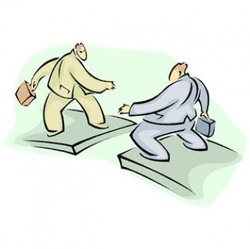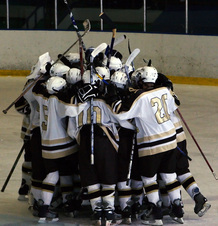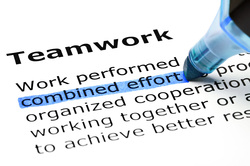" I can't say I'm sorry enough. I'm sure I'll be criticized, but it's true. I felt awful. It wasn't my intention. […] It's not what I wanted to see or anyone to see."
These are the words of Shawn Thornton, a professional hockey player for the Boston Bruins, after attacking and injuring an opponent during a recent game. Suspended by the National Hockey League as punishment for his behavior, the consequences of Thornton’s actions affect him and his team.
Why did Thornton attack his opponent in the first place?
Based on his response—“It wasn’t my intention”—I suspect he allowed his emotions to take over. In other words, he was “emotionally hijacked.”
We’ve all had experiences of being emotionally hijacked, when strong emotions suddenly wield control of our behavior. Our response after the episode is usually the same as his, too: “I don’t know why I acted that way.”
Intense emotions can dominate our thinking and drive our actions—they are powerful sources of energy. In emergency or crisis situations, they work to keep us out of harm’s way: Fight, freeze, or flee. But in other, less noble situations, they cause us to react in ways we later regret (“I felt awful”).
Having the emotional awareness and insight to prevent or short circuit the hijacking process brought on by intense emotions is called emotional intelligence, a necessity in a world filled with situations that can easily give rise to intense emotions. Carefully handling strong emotions, rather than quickly giving into them, is critical in making reasoned decisions that work for us rather than against us.
I also believe an even more powerful force than emotions was involved in Thornton’s reaction that night, a force that oftentimes makes it difficult for individuals to navigate situations that ignite intense emotions: culture.
Suppose you are in a business meeting when a colleague pokes fun at your presentation. His comments are humorous but rude and uncaring. You might notice your muscles tensing and your mind racing. Will you walk over and throw your morning coffee in his face (fight)? Excuse yourself and leave the room (flee)? Or stand motionless, unable to respond (freeze)?
Since most office business cultures do not encourage, support, or condone physical attacks, you opt not to throw your coffee. What you decide to do instead is respond in an emotionally intelligent way: “Your comments leave me feeling put down and I’m not sure how they have contributed to helping us find a solution. In the future, it would be helpful for me if you could be more specific and constructive with you comments and feedback.”
Thornton’s attack took place in a business environment, or culture—professional hockey—that encourages, condones, and supports fighting as a means of solving disputes. For many years, hockey teams employed players for their fighting skills rather than their athletic abilities, according to Seth Wickersham in his article “Fighting the Goon Fight.” It was the role of these enforcers to protect their team’s star players from opponent harassment while also goading the opponent’s star players into a fight.
Ben Livingston, a sports journalist, supports this theory in his article “The Bizarre Culture of Hockey.”
“The only constant in fighting is that you are assessed a penalty for doing it,” he writes. “There exists a bizarre practice of allowing fighting to occur, while at the same time penalizing the participants for doing it. This has lead to it being called a ‘semi-legal’ practice.”
Another potent factor in becoming emotionally hijacked - The emotions of others. In Thornton’s case, this meant the taunting and yelling stirred up by his fans. When a fight breaks out in hockey, fans cheer furiously for someone to be physically punished. Many, in fact, are drawn to the sport for its violence.
Though Thornton was penalized for his part in the incident, his co-conspirators—the fans and the culture of professional hockey—escaped without penalty. As in any emotionally intense situation, Thornton’s behavior was the tip of the iceberg.
It is the stronger influences and motivators—those that support and permit transgressions like his—that remain below the surface, where the culture of hockey exists.
Rules and regulations are never a primary factor in human behavior unless they are in full alignment with a culture’s mission, values and strategic objectives. Rules merely provide cover for an organization so they can identify and blame transgressors and escape accountability and culpability.
We’ve seen this with the likes of Enron, British Petroleum (BP), Massey Mines and most recently, the world’s major banks. All professed to be motivated by high ethical standards and comprehensive safety rules and regulations, but the cultures that have dominated these businesses runs contrary to their hollow words.
It is emotions and culture that have the greatest effect on human behavior and any organization that attempts to influence and enforce positive behavior with regulations alone will remain vulnerable to disruption, loss, and plenty of emotional hijacking.
Thornton said, ”I can’t say I’m sorry enough,” but the burden and responsibility of his actions do not sit entirely on his shoulders. It’s difficult for any employee to make the “right” choices when organizational rules give direction but the culture of the organization is ambiguous about enforcement and in some cases turns a blind eye to negative or unsafe behavior because it supports the organization’s explicit desire for profit, production, entertainment, and risk taking.
The NHL, in which fisticuffs remain an integral part of the sport’s culture, penalizes individuals for fighting, but the behavior of its players remains unchanged, because below the surface enforcers are rewarded and celebrated for their transgressions by fans, teammates, and the media.
Banks will not change their culture of risk taking for profits when CEO’s get bonuses and salary increments after being penalized billions of dollars for violating regulations. And safety will always be secondary when employees are pushed to keep production up at all costs.
The unfortunate aspect of these “Trojan Horse Cultures” is that they present and say one thing, but inside, where true culture resides, are the drivers of behavior, which often put their employees at the lower rungs of the organization in harms way as they attempt to navigate between the rules and what the culture is condoning and endorsing.
I’ve worked for the past ten years assisting organizations in identifying where there is culture misalignment and working with them to restore and or build cultures that authentically and consistently align with their mission, values and strategic objectives. The work is hard, but the rewards are significant and produce results that are sustainable and profitable. Most importantly, they become organizations in which leaders and employees feel pride, take ownership and work jointly to insure success, and where leaders and employees feel accountable and safe in stating. “I can’t say I’m sorry enough.”







 RSS Feed
RSS Feed
